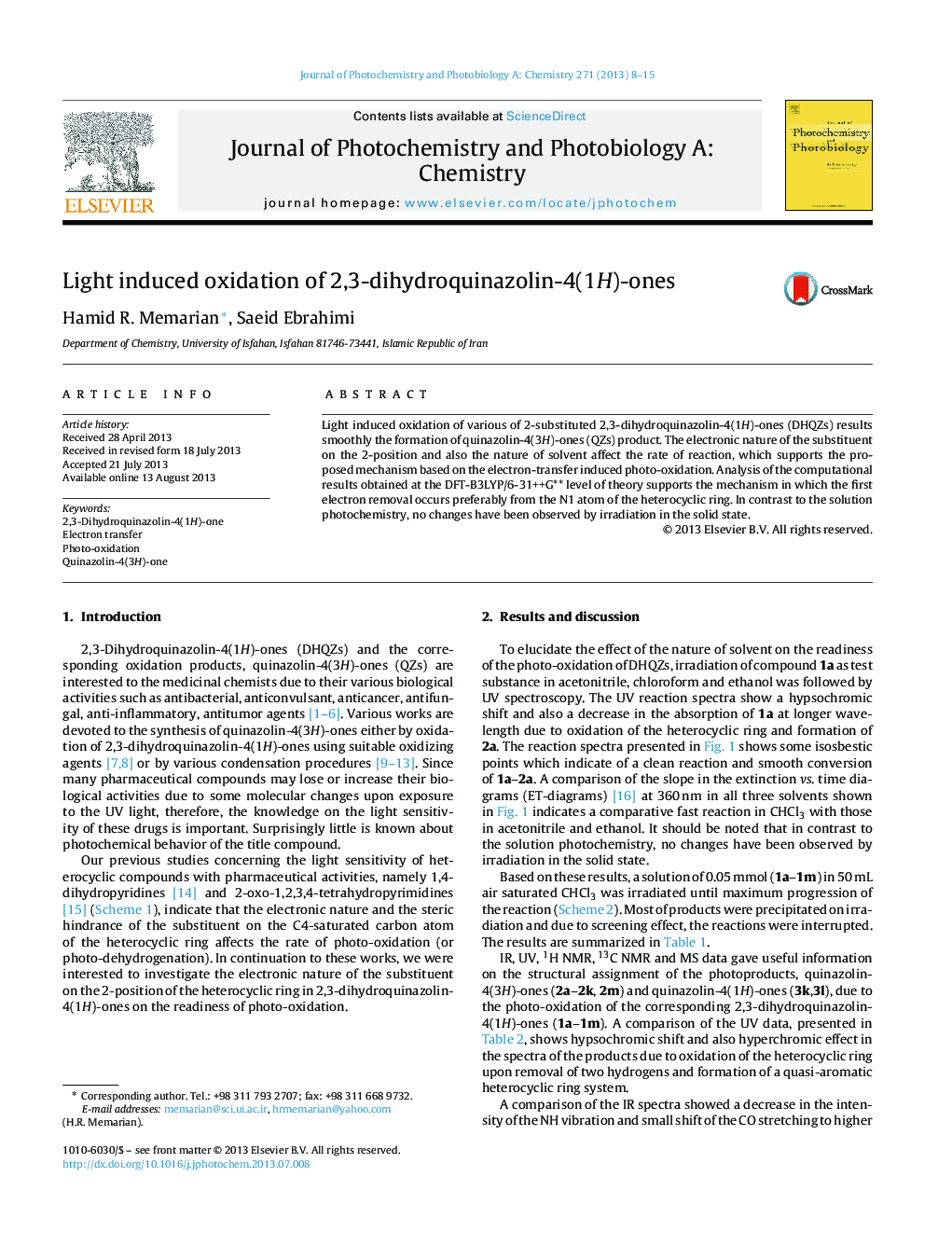| Article ID | Journal | Published Year | Pages | File Type |
|---|---|---|---|---|
| 27277 | Journal of Photochemistry and Photobiology A: Chemistry | 2013 | 8 Pages |
•Photo-oxidation of 2-substituted 2,3-dihydroquinazolin-4(1H)-ones results in the formation of quinazolin-4(3H)-ones.•The electronic nature of the substituent on the 2-position and also the nature of solvent affect the rate of reaction.•An electron-transfer induced mechanism is proposed for this study.•Analysis of the computational results obtained at the DFT-B3LYP/6-31++G** level of theory supports this mechanism.
Light induced oxidation of various of 2-substituted 2,3-dihydroquinazolin-4(1H)-ones (DHQZs) results smoothly the formation of quinazolin-4(3H)-ones (QZs) product. The electronic nature of the substituent on the 2-position and also the nature of solvent affect the rate of reaction, which supports the proposed mechanism based on the electron-transfer induced photo-oxidation. Analysis of the computational results obtained at the DFT-B3LYP/6-31++G** level of theory supports the mechanism in which the first electron removal occurs preferably from the N1 atom of the heterocyclic ring. In contrast to the solution photochemistry, no changes have been observed by irradiation in the solid state.
